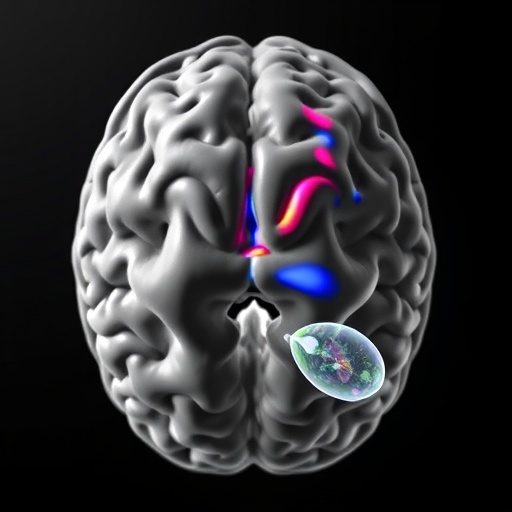Research in autism spectrum disorder (ASD) has taken a significant leap forward with the recent systematic review and meta-analysis conducted by Huang, Nobel Norrman, Oliva, and their colleagues. Their work, published in the Journal of Autism and Developmental Disorders, meticulously examines how individuals with autism process visual information on both local and global scales. This comprehensive investigation sheds light on the intricacies of visual processing that could have far-reaching implications for understanding the cognitive mechanisms underlying autism.
The researchers utilized a robust methodological framework to sift through a substantial collection of contemporary neuroimaging studies. They dedicated considerable effort to identify, extract, and synthesize data relevant to local and global visual processing in individuals with ASD. By employing rigorous criteria for the inclusion of studies, they ensured that their analysis would yield reliable conclusions that emphasize the neurobiological underpinnings of visual cognition in autism.
Visual processing is a cornerstone of human cognition, influencing everything from perception to decision-making. Distinguishing between local and global visual processing is crucial, as it refers to our ability to focus on specific details within a visual field versus our proficiency in grasping the broader context or overall picture. Individuals with autism frequently exhibit atypicalities in how they engage with visual information, which can impact social interactions, communication, and everyday functioning. The findings of this meta-analysis aim to bridge the gap between behavioral observations and underlying neural mechanisms.
Their analysis uncovered a complex interplay between local and global processing in individuals with autism. The data indicated that, while individuals with ASD are often superior at local processing tasks, their ability to perform global processing is notably less proficient. This pattern could explain some of the characteristic traits seen in autism, including challenges in social communication where contextual visual cues play a vital role. As such, these insights provide a vital framework for interpreting behavioral manifestations commonly associated with the spectrum.
Diving deeper into the neurological findings, the review highlighted distinct brain regions that are activated differently when processing visual information in individuals with ASD compared to neurotypical individuals. For instance, regions traditionally associated with visual perception, such as the occipital and parietal lobes, were found to exhibit atypical activation patterns. These insights are compelling, as they provide a neuroanatomical map that underlines how visual cognition diverges in those with autism, potentially leading to targeted interventions or therapies aimed at enhancing these processing abilities.
Moreover, the analysis revealed that the discrepancies in visual processing could be linked to more generalized neurodevelopmental pathways that affect other cognitive domains. The interconnected nature of cognitive processes suggests that enhancing visual processing could have cascading benefits for various aspects of cognition, social interaction, and daily functioning. Thus, there is a growing recognition that interventions targeting visual processing may yield broader enhancements in cognitive skills among individuals with ASD.
The implications of these findings could extend beyond autism research to influence how neurotypical individuals understand visual information. By understanding the divergent pathways of visual processing, educators, caregivers, and medical professionals can develop more tailored approaches that accommodate the unique visual-processing profiles of individuals with ASD. This awareness can foster more inclusive environments that not only support learning but also encourage better social interactions for individuals on the autism spectrum.
In addition to its contributions to academia, the systematic review by Huang and colleagues raises several questions for clinical practice. Healthcare professionals who work with individuals with autism may find new avenues for intervention based on these findings. For example, specialized training programs might be developed that aim to enhance global visual processing while simultaneously reinforcing local processing skills. Such approaches could prove invaluable in clinical settings where improving everyday functioning and social engagement is a priority.
As we move forward, the horizon looks promising with advancements in neuroimaging technologies and expanded research efforts in this field. The insights gained from this meta-analysis pave the way for future studies aiming to build on these findings, further delineating the neural correlates of visual processing in autism. In addition, threads of research examining the relationship between visual processing and other cognitive domains may yield comprehensive frameworks for understanding the spectrum more broadly.
In changing times, increasing social awareness and acceptance of autism will further open discussions on how to best support individuals on the spectrum. Bridging the gap between research and practice is essential for fostering environments where individuals with autism can thrive. This detailed analysis of visual processing serves as a solid foundation upon which both research and practical applications can be built, driving forward innovations in the fields of psychology, healthcare, and education.
As communities become more attuned to the needs of individuals with autism, it is crucial to shift the emphasis from merely understanding the differences to identifying and nurturing the strengths that many individuals on the spectrum possess. The exploration of visual processing patterns in autism reveals that these individuals may exhibit remarkable detail-oriented skills, which, when harnessed appropriately, could lead not only to personal growth but also to contributions across a variety of fields.
In summary, the systematic review and meta-analysis conducted by Huang, Nobel Norrman, Oliva, and colleagues represents a significant stride in autism research. Their findings illuminate the complicated nature of visual processing, revealing both strengths and weaknesses that characterize individuals with autism. This understanding holds promise for the development of more focused interventions that can enhance cognitive function and improve quality of life for those on the spectrum.
As the academic community continues to unravel the complexities of autism, findings such as those presented in this meta-analysis will be crucial in informing our understanding of the condition and guiding future research endeavors. A clearer depiction of local and global visual processing variations could pave the way for advancements that fundamentally reshape therapeutic practices and contribute to a more inclusive society for individuals with autism.
Subject of Research:
Local and Global Visual Processing in Autism
Article Title:
Local and Global Visual Processing in Autism: A Systematic Review and Meta-Analysis of Neuroimaging Studies
Article References:
Huang, Y., Nobel Norrman, H., Oliva, M. et al. Local and Global Visual Processing in Autism: A Systematic Review and Meta-Analysis of Neuroimaging Studies. J Autism Dev Disord (2025). https://doi.org/10.1007/s10803-025-07061-x
Image Credits:
AI Generated
DOI:
10.1007/s10803-025-07061-x
Keywords:
Visual Processing, Autism Spectrum Disorder, Neuroimaging, Local Processing, Global Processing, Cognitive Development, Meta-Analysis, Neuropsychology
Tags: atypical visual processing in ASDautism spectrum disorder visual processingcognitive mechanisms in autismimplications of visual cognition in autismJournal of Autism and Developmental Disorderslocal vs global visual processingmeta-analysis of autism studiesneurobiological underpinnings of autismneuroimaging studies autismsystematic review autism researchunderstanding cognitive differences in autismvisual information processing differences





